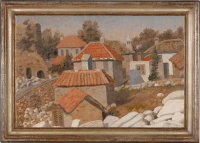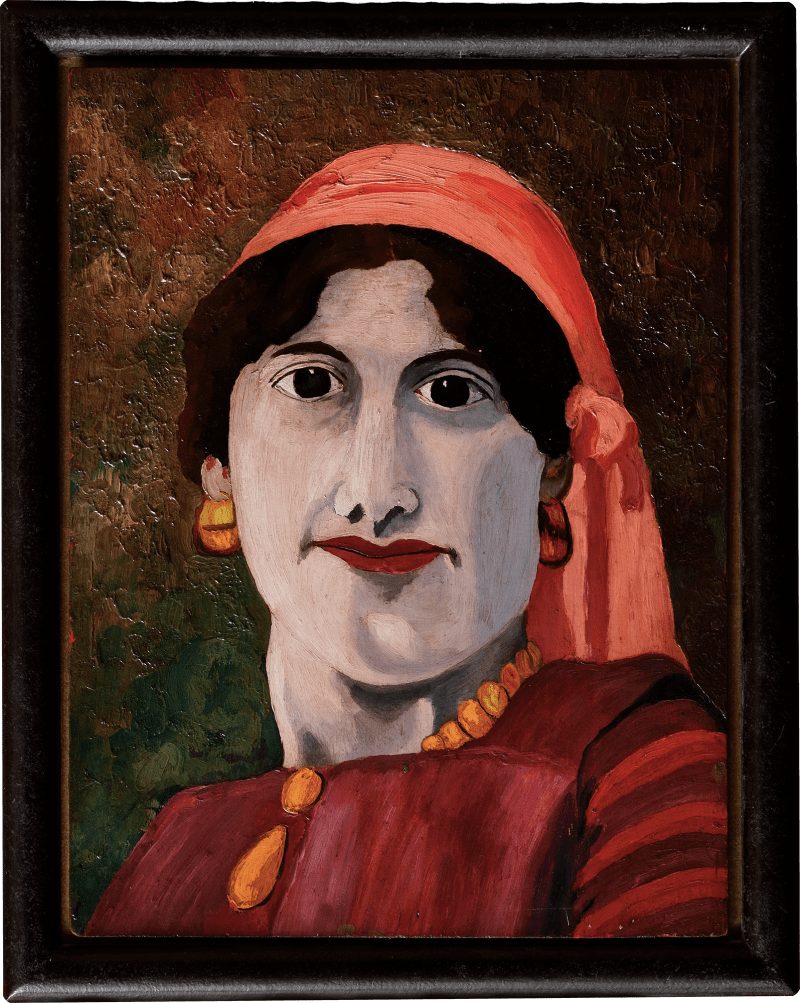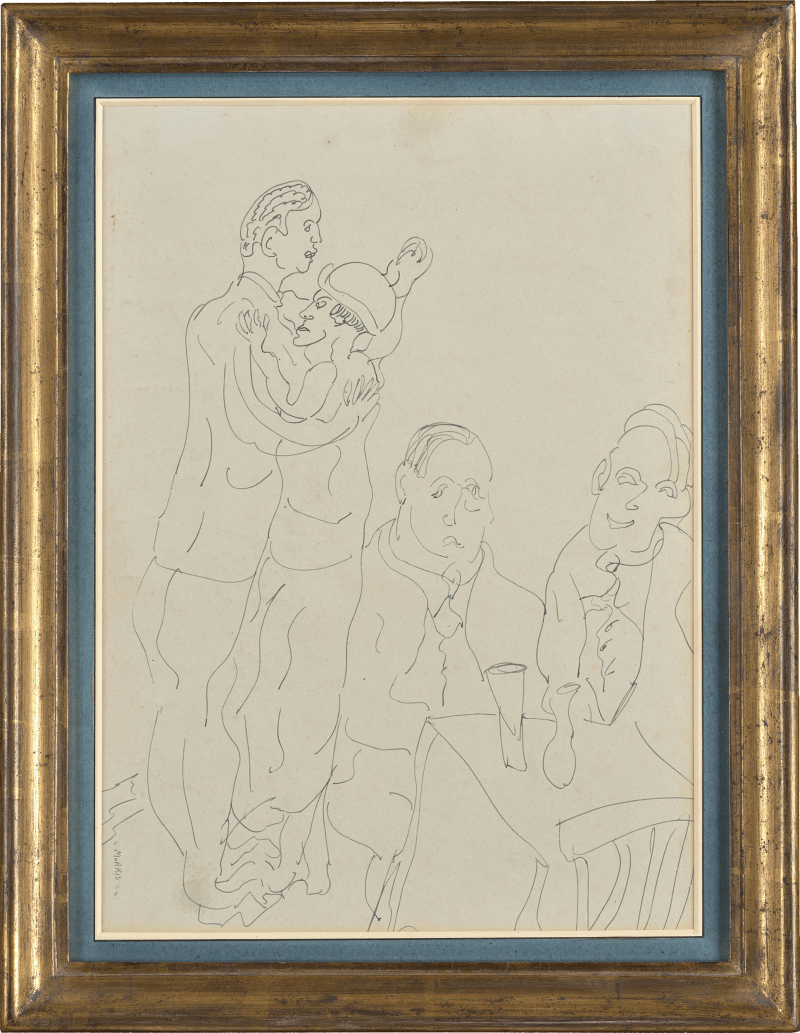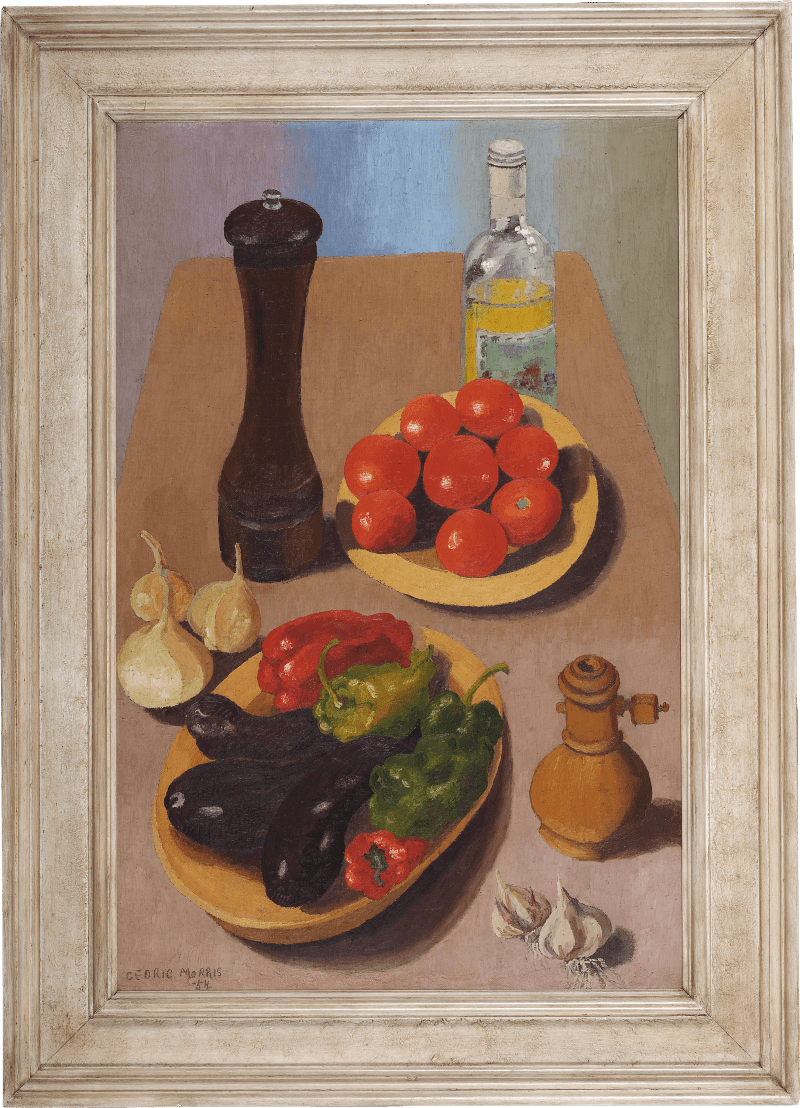Enquire
The present work demonstrates Cedric Morris’ unfailing ability to immerse himself within the natural topography he encountered on his travels and bracingly reinterpret them with his paintbrush.
Morris travelled extensively around the Mediterranean coast throughout his life and the letters he wrote to his partner Arthur Lett-Haines (known as ‘Lett’) are now part of the Tate Archive. By studying these letters, we know that Morris visited Turkey in the 1950s and again between 1970-71, when the present work was painted. A further work, also painted in 1971 and titled Ruined Temple, Side, Turkey, was included in Philip Mould & Company’s 2018 exhibition Cedric Morris: Beyond the Garden Wall.
The present work depicts a view of a Turkish village near Izmir, a city on Turkey’s Aegean coast. Morris’ pallet has captured the warmth of the landscape, which reverberates throughout the terracotta rooftops. The thick, impasto technique employed here is typical of Morris’ style. Maggi Hambling, once a student...
Morris travelled extensively around the Mediterranean coast throughout his life and the letters he wrote to his partner Arthur Lett-Haines (known as ‘Lett’) are now part of the Tate Archive. By studying these letters, we know that Morris visited Turkey in the 1950s and again between 1970-71, when the present work was painted. A further work, also painted in 1971 and titled Ruined Temple, Side, Turkey, was included in Philip Mould & Company’s 2018 exhibition Cedric Morris: Beyond the Garden Wall.
The present work depicts a view of a Turkish village near Izmir, a city on Turkey’s Aegean coast. Morris’ pallet has captured the warmth of the landscape, which reverberates throughout the terracotta rooftops. The thick, impasto technique employed here is typical of Morris’ style. Maggi Hambling, once a student...
| The present work demonstrates Cedric Morris’ unfailing ability to immerse himself within the natural topography he encountered on his travels and bracingly reinterpret them with his paintbrush. Morris travelled extensively around the Mediterranean coast throughout his life and the letters he wrote to his partner Arthur Lett-Haines (known as ‘Lett’) are now part of the Tate Archive. By studying these letters, we know that Morris visited Turkey in the 1950s and again between 1970-71, when the present work was painted. A further work, also painted in 1971 and titled Ruined Temple, Side, Turkey, was included in Philip Mould & Company’s 2018 exhibition Cedric Morris: Beyond the Garden Wall. The present work depicts a view of a Turkish village near Izmir, a city on Turkey’s Aegean coast. Morris’ pallet has captured the warmth of the landscape, which reverberates throughout the terracotta rooftops. The thick, impasto technique employed here is typical of Morris’ style. Maggi Hambling, once a student at Morris and Lett’s East Anglia School of Painting and Drawing, noted how Morris would begin his painting process at the top left-hand corner of the canvas and work his way diagonally downwards, as though earnestly knitting the painting together through repetitive strokes. The present work demonstrates this staccato-like approach to paint application and exemplifies the highly textured finish evidenced throughout Morris’ oeuvre. Morris was a prolific painter whilst abroad and it is through these works that we can gain access to his movements as a traveller and observer of foreign cultures and landscapes. Morris’ eyesight began to steadily deteriorate in the 1970s until he could no longer paint at all from 1975. This work, painted in 1971, is one of his last. |











